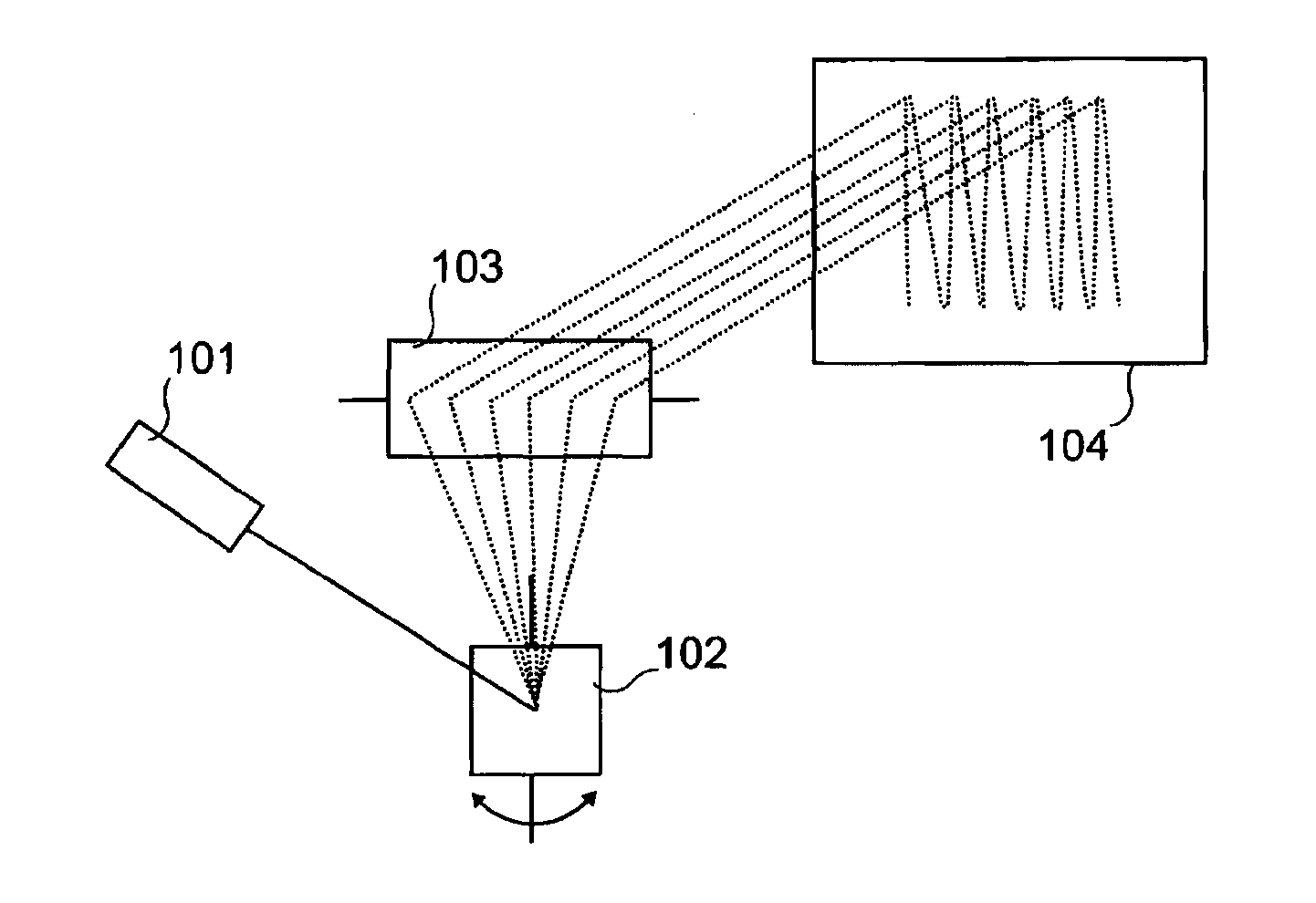Optical micro-projection system and projection method
a technology of optical microprojection and projection method, which is applied in the direction of optical elements, instruments, and reradiation using refraction, etc., can solve the problems of human eye safety, no of the existing techniques are completely efficient, and damage to any of the parts
- Summary
- Abstract
- Description
- Claims
- Application Information
AI Technical Summary
Benefits of technology
Problems solved by technology
Method used
Image
Examples
Embodiment Construction
[0096]For clarity, as is generally the case in representation of microsystems, the various figures are not drawn to scale.
[0097]Laser diodes are made of two discrete components, a laser diode “LD”400 and a photodiode “PD”401, as presented in FIG. 4, the first component is used to generate the laser light while the second is used to monitor the light emission power of the laser diode. For many applications the laser diode and the photodiode are feedback looped to maintain the optical output power of the laser diode constant, independently of the working temperature.
[0098]A laser diode remote sensing technique described by Thierry Bosch in “An overview of self-mixing sensing applications” can be used to measure displacement, vibration, velocity and distance by using the Optical Feedback Interferometry (OFI) properties inside the active cavity of the laser diode 600 (see FIG. 5).
[0099]FIG. 5A presents the Self-Mixing “SM” technique that consists in injecting a triangular waveform modul...
PUM
 Login to View More
Login to View More Abstract
Description
Claims
Application Information
 Login to View More
Login to View More - R&D
- Intellectual Property
- Life Sciences
- Materials
- Tech Scout
- Unparalleled Data Quality
- Higher Quality Content
- 60% Fewer Hallucinations
Browse by: Latest US Patents, China's latest patents, Technical Efficacy Thesaurus, Application Domain, Technology Topic, Popular Technical Reports.
© 2025 PatSnap. All rights reserved.Legal|Privacy policy|Modern Slavery Act Transparency Statement|Sitemap|About US| Contact US: help@patsnap.com



